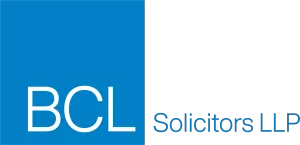- with Senior Company Executives, HR and Finance and Tax Executives
- with readers working within the Accounting & Consultancy, Oil & Gas and Construction & Engineering industries
Amid concerns that some are taking advantage of the Government's schemes to support businesses affected by coronavirus, what are the real risks? John Binns and Andrew Watson investigate.
The risks of support
In spring 2020, the Government unveiled several generous business support schemes to help businesses navigate the turbulent consequences of the Coronavirus pandemic. The major schemes included the original furlough scheme (soon to be ended) as well as three business loan schemes. According to figures released in August, the Government paid out approximately £35 billion to furloughed workers, while guaranteeing nearly £53 billion-worth of loans to businesses across the country.
With vast quantities of cash flowing into the accounts of businesses over a short period, the opportunity to scrutinise applications has been, perhaps understandably, limited. But as the dust settles, and with recent evidence suggesting that there has been a significant increase in company registration for the purpose of obtaining a support loan, the Government and the banks are taking action. That may prompt some businesses to review their own applications, and to consider the possible repercussions should they be accused of misusing the schemes.
What are the support schemes?
Income schemes
Popularly known as 'the furlough scheme', the Coronavirus Job Retention Scheme (CJRS) was launched in March 2020 and, as is well documented, meant that employers could claim back 80% of an employee's gross pay up to £2,500 per month, and choose whether to top up the remaining 20%. Crucially, accessing the scheme meant, and continues to mean, that the employee would not be able to continue working for their employer. Another scheme, the Self-Employment Income Support Scheme, was also implemented to provide a grant to support self-employed workers or members of partnerships.
Business loan schemes
Government support to business has been provided in the form of three loan schemes administered by the British Business Bank (BBB), an arm of the Department for Business, Energy and Industrial Strategy. Although each one has a different selection of accredited lenders and partners, the BBB provides the lender with a government-backed guarantee, the size of which differs from scheme to scheme. In all cases, the borrower is fully liable for the debt. The schemes are:
The Coronavirus Large Business Interruption Loan Scheme (CLBILS), which provides finance to mid-sized and larger UK businesses with a group turnover of more than £45m, and the maximum amount available is currently £200m. Finance is available in the form of term loans, revolving credit facilities (overdrafts), invoice finance or asset finance. CLBILS gives the lender a government-backed partial guarantee (80%) against the outstanding balance of the facility. Finance terms range from 3 months to 3 years.
The Coronavirus Business Interruption Loan Scheme (CBILS), which provides financial support to small and medium-sized enterprises (SMEs) with a turnover of less than £45m. A lender can provide up to £5m (as with CLBILS, in a variety of ways), and the BBB provides a partial guarantee against the outstanding balance. There is no minimum turnover requirement, but the borrower must have a borrowing proposal that the lender would consider viable but for the pandemic. If the principal is less than £250,000, the borrower does not need to provide a personal guarantee. Interest for the first 12 months is paid for by a Business Interruption Payment (BIP), and repayment terms range from 3 to 6 years depending on the form of finance.
The Bounce Back Loan Scheme (BBLS), which provides financial support to smaller businesses that are losing revenue and seeing their cashflow disrupted because of COVID-19. A lender can provide a six-year term loan from £2,000 up to 25% of a business' turnover, up to a maximum of £50,000. Interest is paid by way of a BIP for the first 12 months, with a 2.5% per annuum rate thereafter. Unlike the other schemes, BBLS is 100% government-backed. The length of the loan is 6 years, and early repayment is permitted (without fees).
The risks of fraud
With regard to the furlough scheme, HMRC reported in early September that it was looking into 27,000 "high risk" cases where it believed a serious error had been made in the amount an employer has claimed. A survey conducted in the summer by an employment law firm found that more than a third of furloughed employees have been asked to undertake work by their employer. Whilst a 'serious error' does not translate to fraud, there are clearly serious concerns that many individuals and businesses have abused the system.
With regard to loan schemes by contrast, based on the significant turnover requirement for CLBILS, this is unlikely to prove to be a hotbed of fraudulent or mistaken claims. The reasons being that the volume of applications is smaller, the principal larger, and the checks carried out by lenders greater (not least because lenders incur an actual risk due to the finance not being 100% guaranteed by the BBB). Whilst there is not a minimum turnover requirement for CBILS, the fact that the loans are larger than BBLS, thereby necessitating greater due diligence by the lender, and coupled with the requirement to provide a viable borrowing proposal, mean that the opportunities to exploit the scheme are fewer.
BBLS: 'the riskiest of the set'?
The criteria for a BBLS: a low bar?
Contrast that with BBLS. In terms of the eligibility criteria, the bar is not especially high, and it is significant that the head of National Audit Office, Gareth Davis, has described BBLS as 'the riskiest of the set'. Broadly speaking, a business must have been able to self-declare to the lender, among other things, that it:
- was impacted by the coronavirus pandemic;
- was nota business 'in difficulty' as of 31 December 2019;
- was established by 1 March 2020;
- is notusing another (loan) scheme;
- is notin bankruptcy or liquidation at the time it submits its application for finance; and
- derives more than 50% of its income from its trading activity.
Failure to meet the criteria
A business would have been considered 'in difficulty', for example, if it had entered collective insolvency proceedings or, for a limited company, had accumulated losses greater than half of its share capital in its last annual accounts (although this does not apply to SMEs less than 3 years old). If an application was made in breach of these criteria, or for example, the declared turnover was incorrect, then that should be a cause for concern. Separately, the guidance concerning separate businesses within the same group applying for separate loans is not especially clear and could be easily misunderstood. Clearly, there are several ways in which an application could be incorrect, accidentally or deliberately, about whether the criteria are met.
Improper use of loaned funds
Another potential difficulty arises when the loan is used for a purpose for which it was not made. The BBB has stated that 'the business must confirm to the lender that the loan will only be used to provide an economic benefit to the business, for example providing working capital, and not for personal purposes.' In response to reports of individuals using BBLS loans to purchase supercars and other luxuries, the Treasury has stated that misuse of the schemes could result in prosecution for fraud.
Use of bogus companies
More recently, there have been reports of criminal organisations incorporating companies with the aim of making bogus loan applications. For example, data from Companies House shows a sharp increase in the registration of new companies after the BBLS was announced. In early March registrations were running at 15,602 per week. After lockdown that figure halved to 7,571 per week. Chancellor Rishi Sunak announced the scheme on 27 April and registrations then rose to a record 21,616 by the end of June. Even more alarming are the reports that fraudsters are using stolen identities, obtained via 'phishing' scams, to incorporate these bogus companies.
Amongst the several hundred thousand loans that have been issued, it is likely that a significant number of loans will have been obtained either with a fraudulent intention or, no doubt more commonly, by supplying information under the mistaken belief that it is accurate, or with a poor understanding of the rules. Already there is mounting pressure on the Government and HMRC to ensure that where it is suspected that a loan scheme has been abused, action should be taken to recoup the funds, and where appropriate to investigate or prosecute fraudulent claims.
It is very possible, in that context, that even companies and directors who have made what they honestly believed to be a legitimate application will find themselves under the spotlight. This may manifest itself in several ways, such as an unexplained blocking of a bank account, which may be followed up by a formal court order, enquires from HMRC or the police, or both. Needless to say, the speed with which the support schemes were unveiled, and in some instances the absence of clear guidance on applications, mean that it may prove difficult in practice to separate out the legitimate applicants from the fraudsters.
The content of this article is intended to provide a general guide to the subject matter. Specialist advice should be sought about your specific circumstances.



